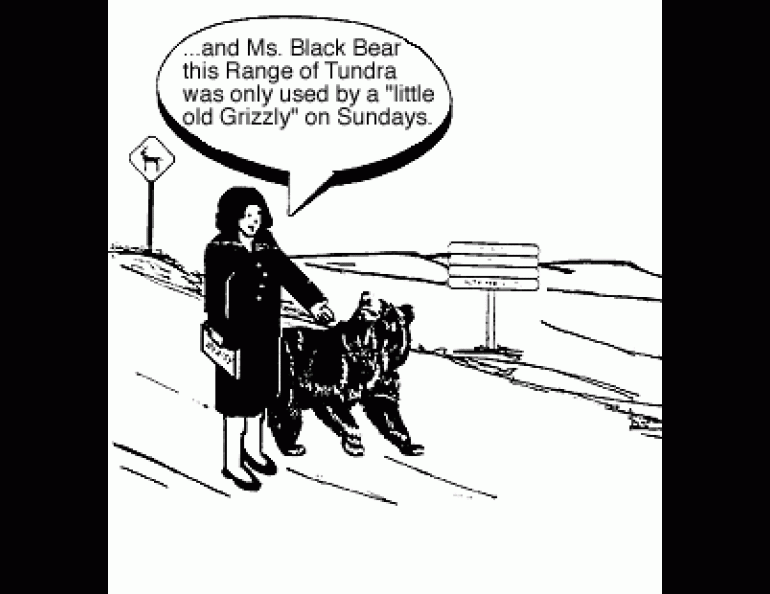
Labrador's Barren-Ground Black Bears
In nature, everything is looking for a way--and a place--to make a living. Leave a field unplowed, and it becomes a meadow; leave the meadow untended, and forest returns. Kill off timber wolves, and coyotes move in.
Another example of this pattern has been uncovered by a researcher working in the Ungava region of Labrador. Alasdair Veitch, a Ph.D. student of zoology at the University of Alberta, presented an informal report on the matter in "Information North," a newsletter from the Arctic Institute of North America.
Veitch's study area is wild and remote, even by Alaska standards. He worked close to the east coast, near 59 degrees north latitude. His base camp was the old Moravian mission known as Hebron, abandoned in 1959. The nearest permanent settlement is now Nain, 200 kilometers south along the coast.
The tree line lies a few inlets to the south along the coast, but below Nain inland. North Ungava is tundra country. Veitch's original aim was to study caribou, but he found himself distracted by black bears.
Savvy northerners may puzzle over that statement. Tundra bears in North America are almost invariably grizzlies. Sometimes a polar bear wanders down from the ice, or a blackie sticks his snout above treeline on a temporary sortie after caribou, but animals living year around on tundra or "barrens" are known to be grizzly bears.
So they once were in Labrador. The Ungava barren-ground grizzlies were identified by a Hudson's Bay factor as early as the 1840s, and the Native people living there discriminated between the fierce brown bears of the open country and the more timid black bears of the forest. Probably grizzlies were never numerous, for early naturalists passed along Native accounts rather than tales of their own encounters with the big bears. By the 1920s, the barren-ground grizzles were gone everywhere east of Hudson Bay. Veitch suspects they were probably victims of overhunting and of the loss of their most important food, caribou. The early twentieth century saw a precipitous decline in caribou herds in the vicinity.
With their big brown cousins gone, black bears moved permanently out onto the now-safe Labrador tundra. The descendants of these pioneering bruins became Veitch's study subjects. He followed them and watched them, from the time they emerged from winter dens throughout the summers of 1989 through 1991. He caught, weighed, collared and released 22 of them. And he learned that these black bears are behaving like brown bears.
When they first awaken in the spring, the bears go after meat. They eat ringed seals, either catching seals frozen out of their escape holes in the ice or scavenging dead ones killed by shifting ice. They hunt caribou and they excavate burrowing rodents, digging up voles or lemmings much as Alaska grizzlies go after ground squirrels.
Even when green sprouts and season-ending berries permit the barren-ground black bears to concentrate on plant foods, Veitch and his colleagues found the bears would never pass up na chance to hunt down meat or scavenge carcasses. Life on the tundra is harder than in the forest, and the bears needed to become better predators.
They also needed to cover more territory. South of tree line, an adult black bear usually has a home range of less than 100 square kilometers. All of Veitch's radio-collared bears had ranges several times that, and two claimed territories of more than 1000 square kilometers. He speculates that the bears need bigger territories because the food supply is more patchy, with wide expanses holding little good to eat, and because good denning sites are sparse in tundra country.
The black bears may roam and hunt like grizzlies, but they aren't growing to grizzly size. Perhaps because life on the Labrador tundra is hard, or maybe because undersized bears got shoved out of forested country, the barren-ground blackies are on the small side. Still, any black bear is worth respect--especially when it's a highly carnivorous one.





